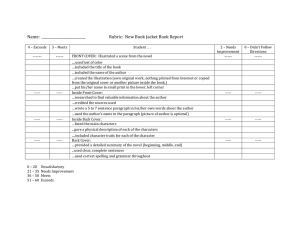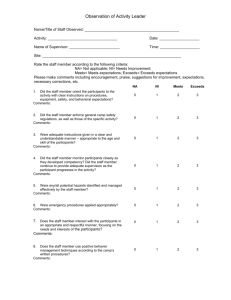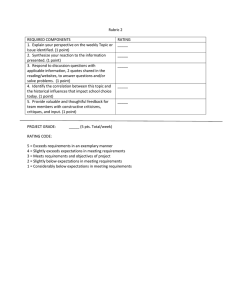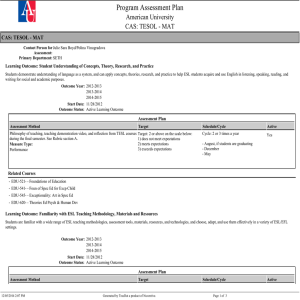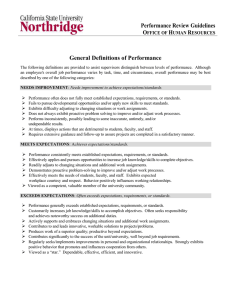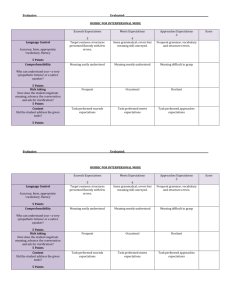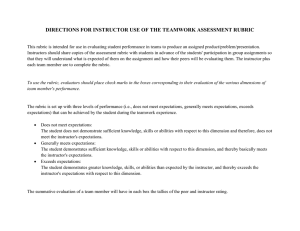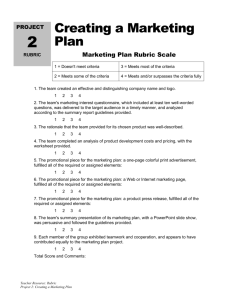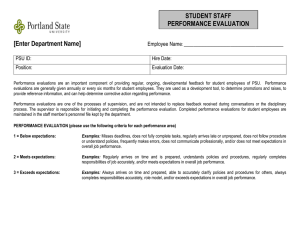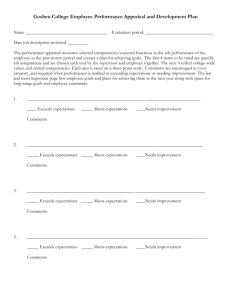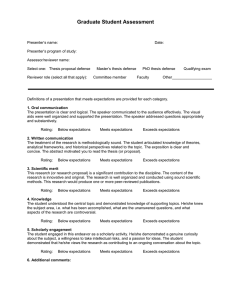Comparison Rubric - Oregon State University
advertisement
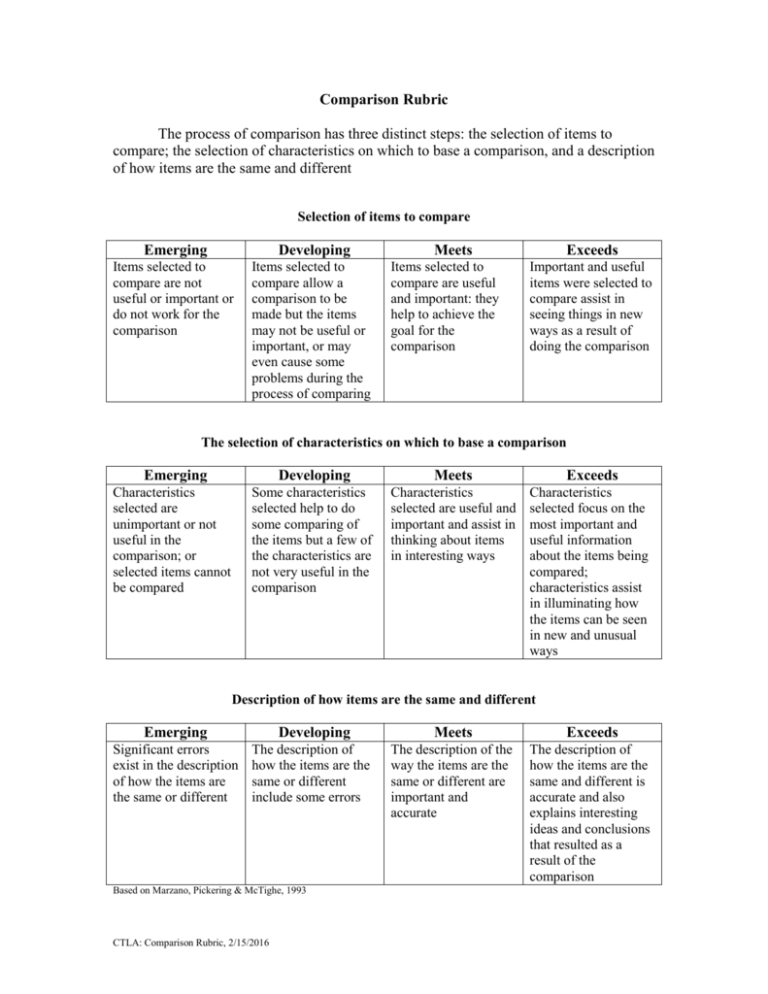
Comparison Rubric The process of comparison has three distinct steps: the selection of items to compare; the selection of characteristics on which to base a comparison, and a description of how items are the same and different Selection of items to compare Emerging Developing Items selected to compare are not useful or important or do not work for the comparison Items selected to compare allow a comparison to be made but the items may not be useful or important, or may even cause some problems during the process of comparing Meets Items selected to compare are useful and important: they help to achieve the goal for the comparison Exceeds Important and useful items were selected to compare assist in seeing things in new ways as a result of doing the comparison The selection of characteristics on which to base a comparison Emerging Developing Meets Exceeds Characteristics selected are unimportant or not useful in the comparison; or selected items cannot be compared Some characteristics selected help to do some comparing of the items but a few of the characteristics are not very useful in the comparison Characteristics selected are useful and important and assist in thinking about items in interesting ways Characteristics selected focus on the most important and useful information about the items being compared; characteristics assist in illuminating how the items can be seen in new and unusual ways Description of how items are the same and different Emerging Developing Meets Exceeds Significant errors exist in the description of how the items are the same or different The description of how the items are the same or different include some errors The description of the way the items are the same or different are important and accurate The description of how the items are the same and different is accurate and also explains interesting ideas and conclusions that resulted as a result of the comparison Based on Marzano, Pickering & McTighe, 1993 CTLA: Comparison Rubric, 2/15/2016
